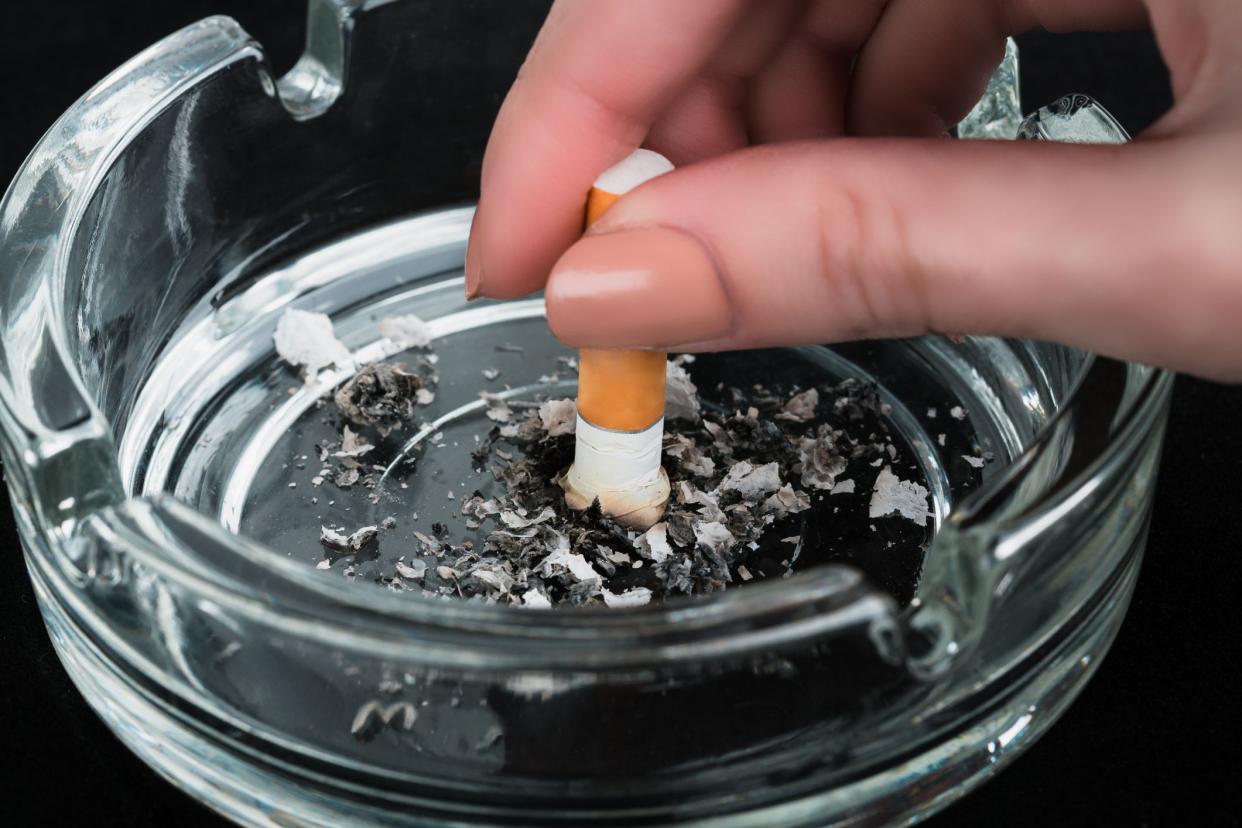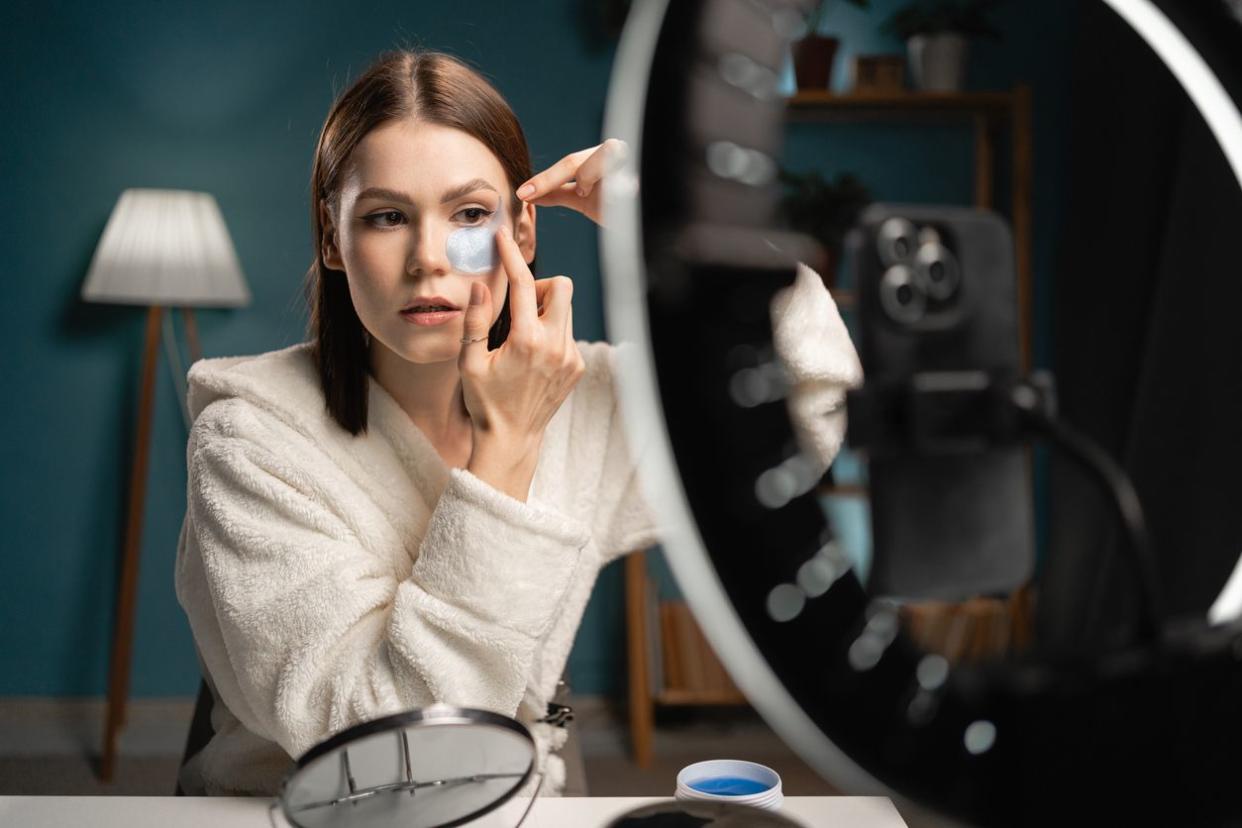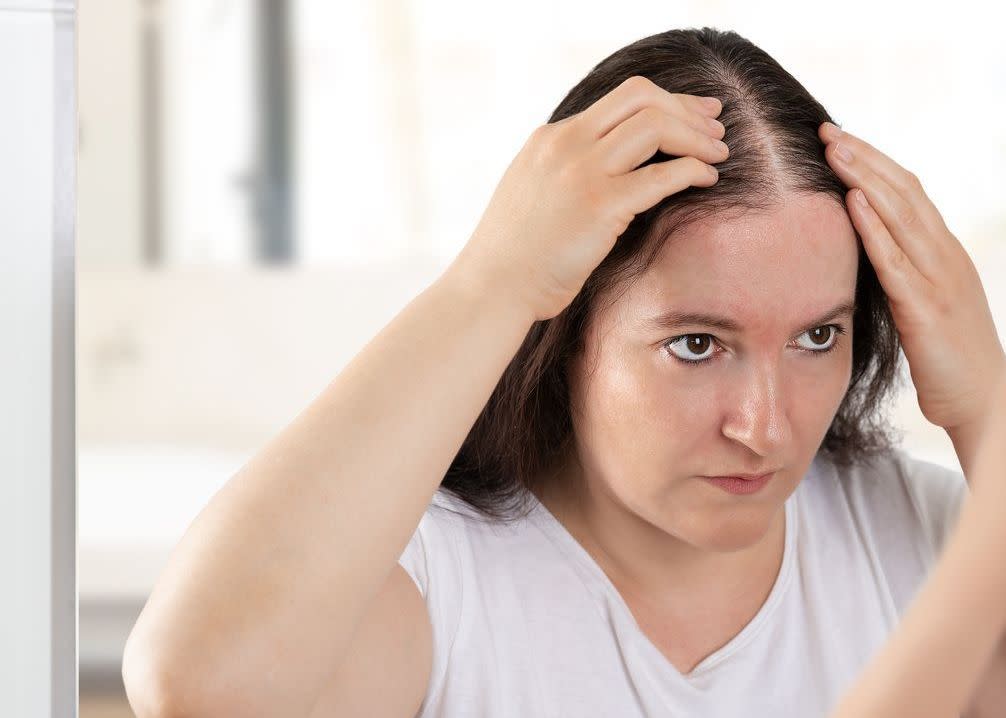What Are Wrinkles?
Wrinkles are creases or lines that form in the skin. They’re a natural part of the aging process, though other factors can speed up or slow down wrinkle development.
Wrinkles can emerge anywhere on the body, but facial wrinkles and neck wrinkles tend to be most visible. On the face, they often form around the eyes, neck, forehead, and mouth.
What Are Fine Lines?
Fine lines are shallow lines or creases in the face. If you’re wondering how they differ from wrinkles, the main distinction is that they’re not as deep or noticeable. But fine lines can eventually become deeper wrinkles.
Who Gets Wrinkles?
Wrinkles can affect anyone, but they most commonly appear on people whose natural collagen production declines. In other words, everyone gets wrinkles as they age.
Collagen is the most prevalent protein in the human body. It plays a vital role in maintaining the skin’s structure and elasticity.
Collagen is a critical component of connective tissues, including skin. It’s responsible for giving skin its plump, elastic quality. This rigid protein bounces back after stretching, helping keep the skin firm and bouncy.
When Do Wrinkles Form?
It varies. But for some folks, fine lines can start to appear in their early twenties when the body starts to produce less collagen.
In your 30s, you might start noticing what’s referred to as dynamic wrinkles or expression lines. These are usually visible or accentuated when you express emotion — like laughing or making a surprised face.
Wrinkles usually become more noticeable over time. In your 40s and 50s, you may start to notice static wrinkles. You can see these folds even when your facial muscles aren’t moving and your face is relaxed. They’re generally considered permanent, though some treatments might help reverse the intensity of lines.
In your 60s and 70s, many people develop more prominent and permanent wrinkles. Learn more about Female Hairlines.
Common Wrinkles Appearing on the Face
Dynamic wrinkles that form in the outer corners of the eyes are often called crow’s feet. The folds between your eyebrows that show up when you furrow your brow are called frown lines — or “elevens” because they make two vertical lines. You might also see wrinkles under your eyes when smiling.
Lip lines and forehead lines can also develop from laughing and smiling or chewing and puckering — like if you smoke cigarettes or drink most of your water out of a straw. Wrinkles on the forehead can also appear.
Symptoms of Wrinkles
Wrinkles are a symptom of aging, but some early signs of wrinkles can include fine lines. Later, deep wrinkles may form, particularly around the mouth, nose, eyes, and forehead.
Other signs of skin wrinkles can include looser skin that lacks fullness or skin that looks less firm or as if it’s drooping.
As you age, wrinkles can appear as crepey skin. Now, you may be wondering, What is crepey skin, and what causes crepey skin? Crepey skin is skin that sags and contains fine wrinkles. It resembles crepe paper, hence the name.
We’ll explore the causes of wrinkles and crepey skin below.
What Causes Wrinkles?
There are a few different causes of wrinkles and fine lines. In general, wrinkles are caused by slower cellular turnover (aka slow skin cell growth) and less collagen production.
These things happen due to aging, facial expressiveness, genetics, and lifestyle factors.
Aging
Both fine wrinkles and deeper lines are signs of aging. As mentioned, your body makes less collagen as you age. This reduction in collagen levels contributes to the development of wrinkles, making them more common with every passing birthday.
Hormonal changes during menopause can also play a role in aging skin and the formation of wrinkles.
Facial Expressiveness
If you’re wondering what causes forehead wrinkles, this is one of the main culprits. Over time, repeated facial expressions can create creases. This is because of continuous, frequent facial muscle contractions.
So, does smiling cause wrinkles? The short answer is yes.
Genetics
Skin aging is complex. But one study on caucasian people found that 60 percent of skin aging is due to inherited genes from your immediate family. That means the other 40 percent is environmental.
Research on race, skin tone, and skin aging is still limited. However, some studies show that melanin — another genetically inherited substance in the skin — can help protect against sun-induced aging. Darker skin tones contain more melanin than lighter complexions.

Lifestyle Factors
Excessive sun exposure and repeated sunburns over the years can lead to wrinkles — or make them crop up sooner than later.
Other lifestyle factors that can contribute to wrinkles and fine lines include smoking cigarettes and repeatedly puckering or creasing an area of skin. For instance, lines on the décolletage area (low neckline and cleavage) can appear from sleeping with your chest curled in.

Risk Factors for Wrinkles
Fine lines and wrinkles can develop for a variety of reasons — the unavoidable causes are listed above.
The most common risk factors that can exacerbate premature wrinkling, further degrade collagen, and accelerate the aging process include:
-
Environmental pollution. Your skin (an external organ) is continuously exposed to environmental factors, including pollutants. Dirt, dust, smoke, and other airborne pollutants can all impact the health of our skin and lead to wrinkles and pigmentation issues like dark spots.
-
Ultraviolet (UV) radiation. Repeated sun exposure can lead to sun damage (one sign is uneven skin tone) and degrade the skin’s elasticity, causing wrinkles. This is because UV rays affect the self-renewing skin cells that help make and maintain collagen.
-
Smoking. Some research shows that smoking can make your body slow down collagen production, which can result in deeper, earlier wrinkles. It can also deepen existing wrinkles.
-
Poor diet. Studies suggest that eating lots of processed foods and refined sugars and not enough antioxidants like vitamins A and C and protein might lead to premature aging in women. The same is true for dehydration, as dry skin is less elastic.
In sum, exposure to environmental aggressors and certain lifestyle choices, combined with the natural aging process, can lead to visible changes in skin appearance and health.

Diagnosing Wrinkles
A dermatologist can perform a visual examination to determine whether you have wrinkles. After that, they can help you figure out the right treatment plan if you’re interested in reducing them or preventing more from arising.

Wrinkle Treatments
There are a few treatment options, cosmetic procedures, and plastic surgeries for wrinkles. We’ll outline some of the most popular below.

Topical Anti-Wrinkle Products and Creams
If you’re looking for less invasive and more budget-friendly treatment options, these topical products and ingredients show promising benefits:
-
Tretinoin. Known by one of its brand names, Retin-A, tretinoin belongs to the synthetic retinoid class of medications. It comes in creams or gels and requires a prescription. Tretinoin may reduce the look of fine lines, but side effects can include skin irritation, like redness and peeling, sensitivity to sunlight, and dryness. These are more common when you first start using it.
-
Retinol. This is an over-the-counter retinoid derived from vitamin A — and it’s much less potent than prescription tretinoin. As such, retinol is slightly less effective but also less likely to cause irritation. You can find retinol in many over-the-counter products.

Skin-Resurfacing and Laser-Resurfacing Techniques
If you’re looking to boost your skincare routine with a clinical treatment or at-home remedy, here are a few to look out for:
-
Microdermabrasion. This treatment exfoliates the skin’s surface to remove dead skin cells. It can help reduce the appearance of fine lines and treat uneven surface texture. However, microdermabrasion doesn’t treat deeper wrinkles.
-
Dermabrasion. is a more intense version of microdermabrasion. It involves a special tool that exfoliates the skin and removes the top layer, making it appear smoother and more supple. Right after treatment, the skin may look red and swollen, requiring a bit of downtime.
-
Microneedling. This technique stimulates deeper layers of skin and promotes collagen production by puncturing the skin with teeny-tiny needles. After treatment, you might see minor swelling or redness for a day or two. It’s safe for all skin tones, but the first two treatments may offer better results for fair skin.
-
Chemical peels. These use chemical exfoliants like alpha-hydroxy acids (AHAs) or fruit enzymes to remove or “peel” off the top layer of skin. They vary in intensity, the lightest options being the best for sensitive skin. Deeper chemical peels remove both the top and dermis (the middle layers of the skin). Recovery time varies from a few days to three weeks, depending on the strength.

Botox Injections
Botulinum toxin is a neurotoxic ingredient used in injections to temporarily freeze facial muscles to prevent the movements and expressions that exacerbate wrinkles. It’s the active ingredient in Botox®, Dysport, Xeomin, and Jeuveau.
If you’re wondering how to prevent forehead wrinkles, Botox is a great option. The injections are also popular around the eye area, as they smooth out the look of fine wrinkles.
Botox may not be as effective for deeper lines caused by volume loss, like smile lines (wrinkles around mouth), under-eye hollows, and deep forehead wrinkles (which can all be signs of collagen loss in the face).
Side effects include minor pain, swelling, and bruises at the injection site. The muscle-freezing effects last about three to five months.

Dermal Fillers
Filler injections literally “fill” in the folds in your skin to give it a plumper, more even surface.
Dermal fillers can contain various chemicals, but hyaluronic acid is the most popular, effective, and safe type. Hyaluronic acid is found naturally in joints and skin and helps maintain moisture.
Hyaluronic acid fillers are best for:
-
Nasolabial folds, or smile lines (lines around mouth)
-
Melolabial folds, or “marionette lines” (running from the corners of the bottom lip to the jawline)
-
Under-eye bags or creases
-
Cheeks
-
Chin
-
Lips
Fillers produce immediate results and don’t require much downtime.
The results can last several months or longer. One study found that they could last as long as two and a half years after the initial injection. Over time, the body absorbs (or “dissolves”) dermal fillers.
Side effects can include bruising, redness, swelling, and pain. You can treat those side effects by icing or applying an arnica salve.
Some common brand names for hyaluronic acid fillers are Elevess, Juvéderm, and Radiesse.

Facelifts
This is a surgical procedure in which loose layers of skin and fat are removed from the face. It gives the skin a tauter, more youthful look.
Patients either have general or local anesthesia during the procedure. Various techniques exist, but facelifts have long-lasting results — 10 to 15 years, sometimes longer.
While other cosmetic procedures, like Botox and fillers, are minimally invasive, traditional facelifts can require a few weeks of downtime.

How to Prevent Wrinkles
You can adopt a few healthy lifestyle habits to prevent premature aging and wrinkling and promote tighter skin.

Establish a Good Skincare Routine
-
Use sun protection. Wearing sunscreen is paramount. Apply sunscreen daily, even during the winter or if you don’t plan on being in the sun, and seek shade when possible. A broad-spectrum SPF of 30 or higher is best to prevent photoaging (sun damage) and protect against skin cancer.
-
Apply a moisturizer in the morning and evening. Moisturizing with creams and serums to lock in moisture is advised.
-
Consider adding a retinoid to your routine. You can opt for a stronger prescription strength or an over-the-counter option.

Eat Mindfully
One study found that diets higher in potassium and antioxidants, such as vitamins A and C, correlated with fewer wrinkles.
Reach for foods high in protein and antioxidants to support skin health and collagen production. This includes:
-
Lean cuts of meat, fish, chicken, eggs, tofu, and bone broth
-
Leafy greens
-
Legumes and nuts
-
Fresh, whole fruits
Also, remember to stay hydrated. Dry skin can exacerbate wrinkles, so drinking enough water will help quench your skin from the inside out.
Lastly, try to avoid tanning (including tanning beds!), smoking, and drinking alcohol to help prevent wrinkles.
Wrinkles are a natural part of aging. Still, understanding the role of collagen in skin health helps explain why they become more prevalent over time and underscores the importance of protecting your skin from environmental damage.
This article originally appeared on ForHers.com and was syndicated by MediaFeed.org.

